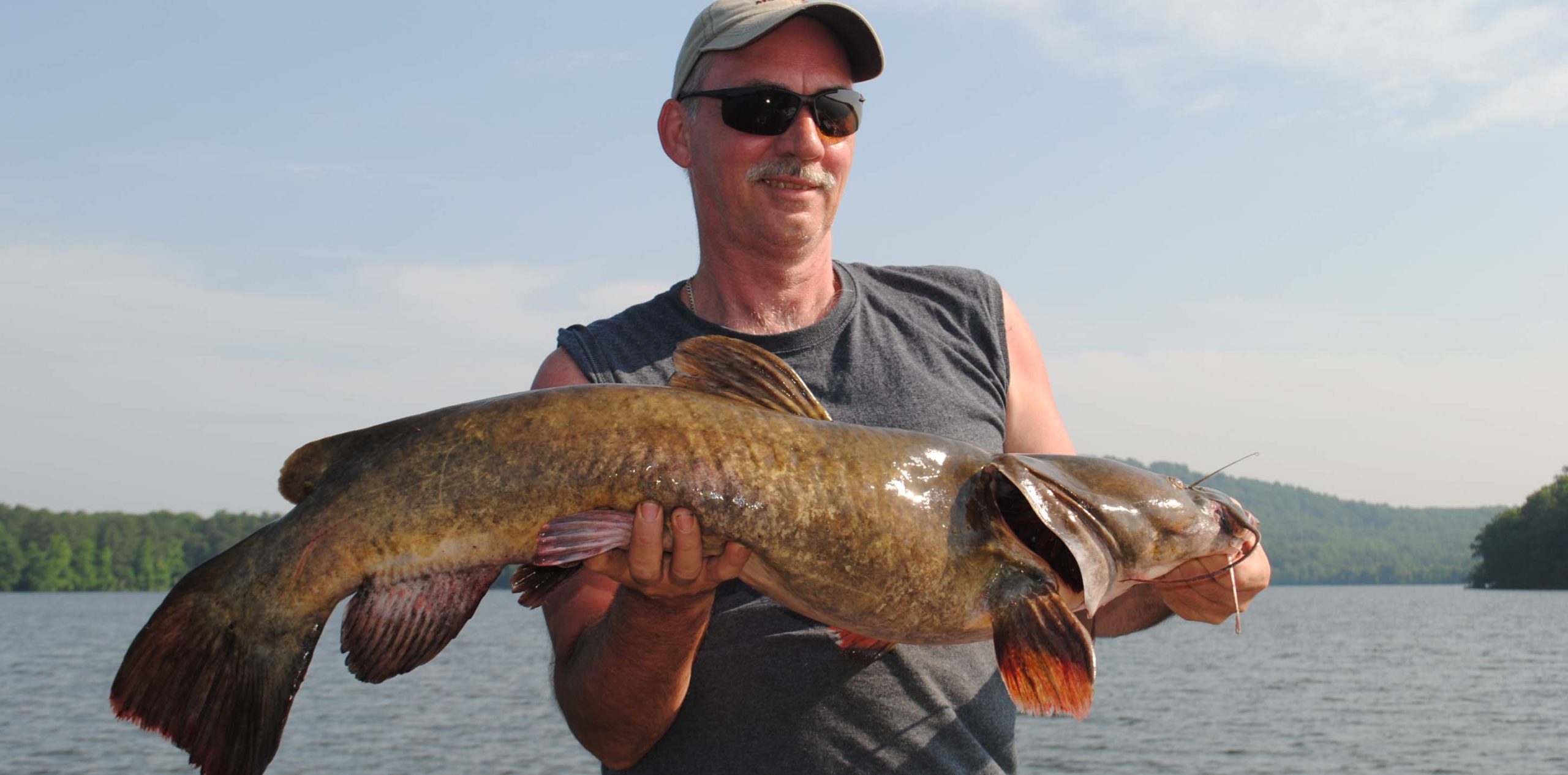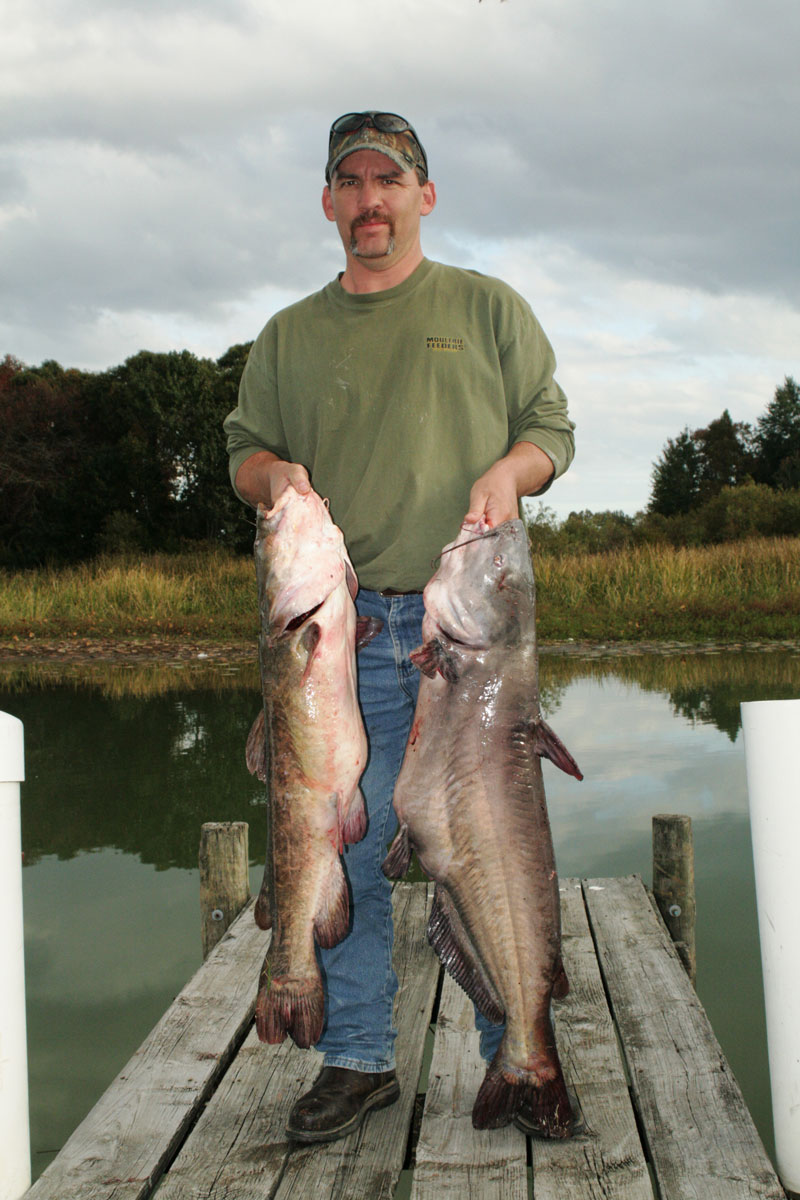
Spend a few August evenings targeting catfish
August may be known as the dog days, but it’s actually a great time for cats, too, especially the big blues and flatheads of the Santee Cooper. Excellent largemouth and bream action on both lakes also provide opportunities if you know where and how to find them.
Catfish action will be a function of forage and current, to a great extent. If there’s been ample rain and current flow though the Diversion Canal is good, as it has been in recent years, catfishing will be excellent during August both day and night. The catfishing will be good for all of the big three species: blues, flatheads and channel catfish.
Guide Kevin Davis at Blacks Camp said the Canal can provide all the action fishermen can handle when conditions are right this month.
“When the current is right, the cats follow the forage into the canal and gorge on food,” Davis said. “The bite is solid during the day, but the heat can get oppressive during the afternoon, so most daytime anglers fish from dawn until about noon and then again late in the evening. The primary tactic by day is to drift-fish with baits just off the bottom. Night fishermen score better at this time of year by anchor-fishing around holes and other bottom contour changes.”
Fish live baits for big flatheads as well as blues or fresh, big chunks of cut bait for big blues and the occasional flathead. Stinkbaits such as Doc’s Catfish Bait will enable anglers to catch scads of channels and smaller blues with the occasional big blue. Shrimp, worms and minnows will also attract a lot of catfish of assorted species.
Davis (843-312-3080) said Lake Moultrie will also produce good action in the main lake, especially if the current flow diminishes in the canal.
“I primarily fish by day on Lake Moultrie, but some anglers do really well in the evening and at night,” he said. “In either scenario, drift-fishing is usually the most productive. I’ll fish along the edges and down into the deeper water during the day and occasionally work shallow water areas as well, especially early and late. I look for an area loaded with forage as well as some big fish on the graph and work the area with several drift lines bumping the bottom. Cut herring, perch and bream are top baits. At night, the same principle applies for tactics and bait, just some of the action may be shallower.”
Guide Alan Spence (803-478-5029) said catfishing on Lake Marion is excellent in August; he’ll score good catches on both blues and flatheads.
“I focus on the lower end of the lake during August and generally around deep water during daylight hours,” Spence said. “I’ll usually fish late afternoon and into the night until midnight, allowing the opportunity to fish after dark, which is often a prime time for big flatheads.”
Bass fishing is good throughout August; much of the fishing is in shallow water but around heavy vegetative cover.
Guide Inky Davis finds some good bass on humps and ledges in Lake Moultrie, but those are isolated hot spots.

“The open-water fishing can provide a lot of action quickly, but it can take hours to locate these spots,” he said. “Unless someone fishes a lot and keeps up with open-water fishing, working the shallow water cover will be the most-consistent bite for good bass action.
Davis (803-478-7289) said to get out early and fish cypress tree points, open stump flats near drops, downed logs and vegetation points and pockets near deeper water.
“I’ll usually fish in 4 to 8 feet water in August; I’ll primarily use Texas-rigged plastic worms, spinnerbaits and small crankbaits,” he said. “I also will use crankbaits and spinnerbaits, but often the soft plastics are the most-productive choice”
Bream and crappie action is actually quite good during August, based on reports from several panfish experts. One tactic that works for both species is to fish woody cover in the 12- to 24-foot depth range on Lake Marion and in the 18- to 38-foot depth range on Lake Moultrie. The cover or brush may rise several feet off the bottom, and both big bream and crappie will hold around the edges.
For crappie, work minnows vertically, and for bream, use crickets. Some huge stringers of bream will be caught in this manner, a very overlooked tactic for mid-summer action. Slab crappie are also caught as they are now in their mid-summer, deep-water pattern. The specific depth will depend on the depth of the brush and lake you’re fishing. Use an electric motor to ease live bait for the targeted species is one good tactic. Most experts said they’ll try minnows for the crappie first but use crickets on the bream before they leave. One species can dominate a specific brush pile on a given day, but it may change within a few days.
Bream will also be taken in good numbers around cover such as weeds and trees in shallow water. The key is to work a lot of cover and stay on the move until a hot spot is located. Fish it and move again when the action slows.
It’s time to plan hunt strategy for the upcoming alligator season. The 2015 season is from noon, Sept. 12 until noon, Oct. 10. Early September is prime time to keep a lookout for the location of alligators if you’re hunting them this season. If you didn’t get a permit up but see lots of alligators, you may want to sign up for 2016. The 2016 sign-up period will be from May to mid-June next year.
The alligator season is broken into four units with a total of 1,200 permits. All of Lake Marion is in Unit 3, and Lake Moultrie is in Unit 2. On the Santee Cooper lakes, Lake Marion to the SC 45 Bridge on the Diversion Canal is in Midlands Unit, and below SC 45 Bridge on the Diversion Canal and Lake Moultrie is in Middle Coast Unit.




Be the first to comment